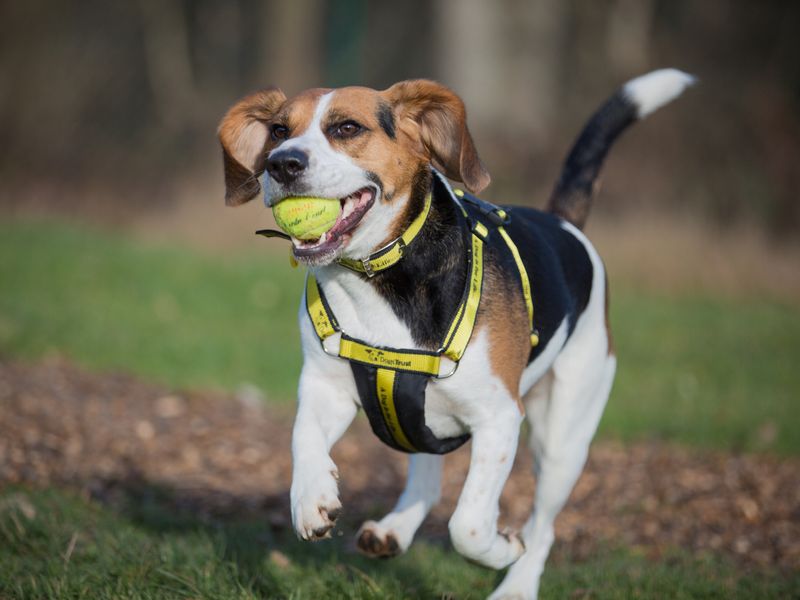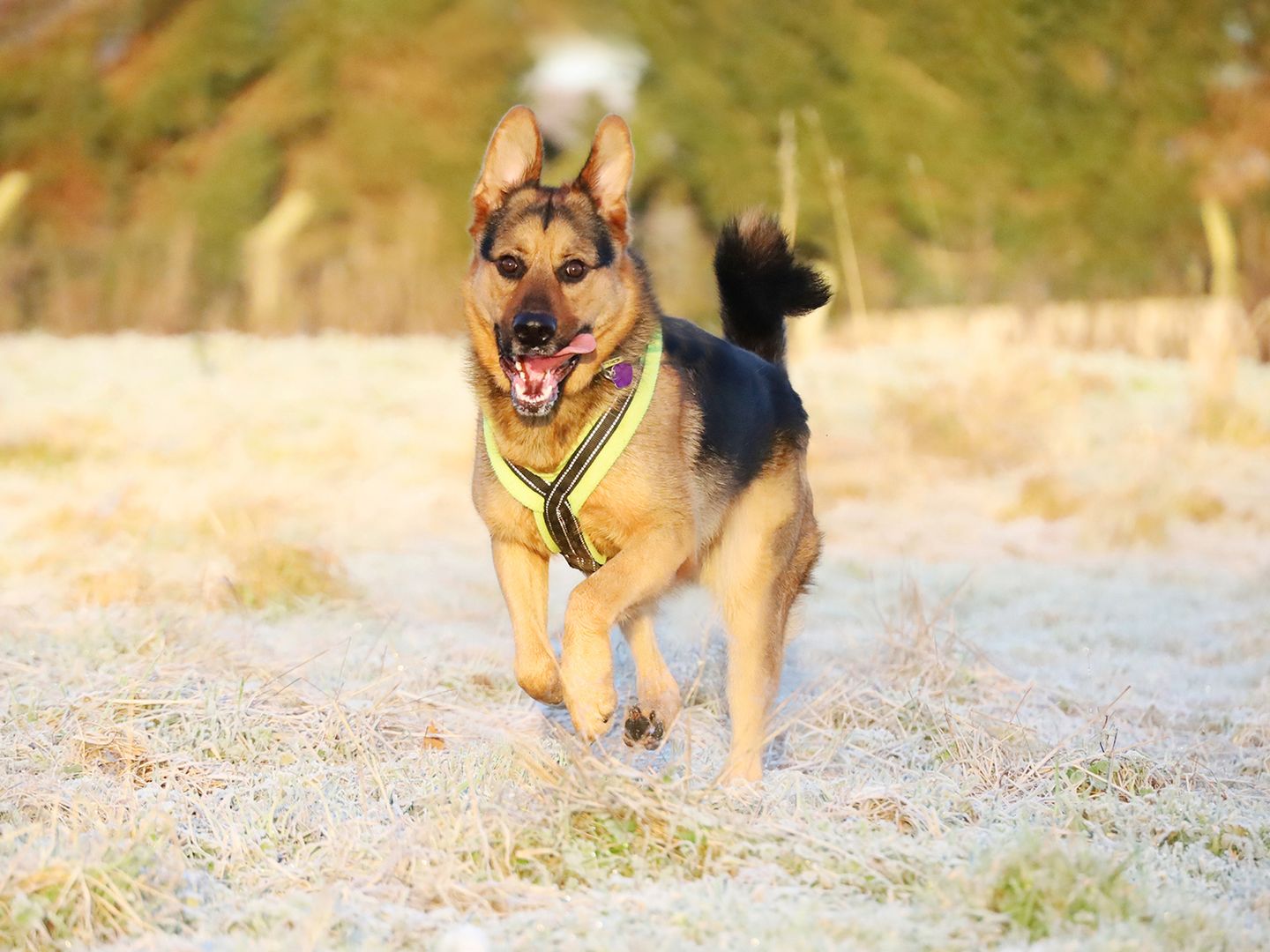How to train your dog to wear a harness
Find out about choosing a harness, putting it on your dog, and helping them feel comfortable wearing one.

Harnesses are a useful way to reduce the risk of neck injury, maximizing comfort and making walkies more enjoyable. You’ll still need to teach your dog to walk nicely on the lead so you can both walk together comfortably.
Taking the time to introduce your dog to wearing their harness in a kind, gentle and fun way is likely to save you both a lot of stress in the long term. Your dog will learn to really enjoy wearing their harness and reaping the benefits.
Choosing a harness
There are many different types of harness available but it’s important to choose carefully so your dog’s movement is not restricted. Some harnesses cross directly in front of the shoulders preventing natural movement, and you should avoid these.
Most harnesses require your dog to put their head through an opening, but you can find alternatives that clip around the neck and body which might be better for dogs who are a little head-shy.
Make sure your dog’s harness fits well. You should be able to fit a finger comfortably between the strapping and their body while they’re wearing it so it doesn’t move position while the dog’s moving. Your dog shouldn’t be able to slip out of it.
Remember that to comply with the law, when you are in public spaces you will need to make sure your dog also wears a dog collar, with an identity tag attached to it, even if you are walking them in their harness.
It’s also worthwhile regularly checking your harness, collar and lead for general wear and tear.
Introducing the harness
Place the harness on the floor and scatter some tasty treats around it so your dog can investigate it and start to associate it with nice things right from the start.
As long as they’re happy about it, lift it up and feed your dog some of their favourite treats through the head-hole. Place your hand all the way through so your dog doesn’t have to put their head through at this early stage – making it as easy as possible means they’re likely to be happy about it right from the start.
Placing it over their head for the first time
Holding a treat in your hand, move it backwards away from the head-hold. Your dog will have to push their nose and mouth through to take their reward.
If your dog isn’t showing any signs of concern, continue feeding them treats using this method while gently putting the harness around the dog’s neck and letting it hang loosely there (don’t do it up yet).
If they retreat, simply remove the harness straight away and go back a stage.
Doing the harness up
Make sure your dog is comfortable with the noise of the clips first by simply clipping the harness up while you’re holding it, so they can hear the sound and you can see how they react.
If they’re fine with that, then place the harness over their head, reward them with a treat, and then do up the clips around their body. Giving them tasty treats again straight afterwards will distract them. They’re likely to associate having their harness done up with good things happening.

Encouraging your dog to walk with their harness on
Once your dog has their harness on, get them used to wearing it while they move about by encouraging them into activity that will distract them, such as playing a game or doing some fun trick training
If they’re comfortable, go out for a walk and, if they do need some more encouragement, give them a treat every now and then along the way.
Resolving any problems
If your dog is struggling with any stage of this training, simply go back to the stage before and continue for a little while longer to build their confidence before progressing again.
If you believe your dog is worried by the harness or by being handled then stop. Always respond to your dog’s communication, so they know they can trust you. Signs that a dog might be worried can be very subtle and easily missed.
If your dog is behaving in a way that worries you or if they show any signs of aggression, please contact your vet to rule out any medical reason. Your vet can then refer you to a qualified behaviourist to help you further.
Happy walks ahead
Choose the right harness and introduce it carefully to your dog, and they should soon feel comfortable with wearing it. You’ll both have miles of happy walks to look forward to.





